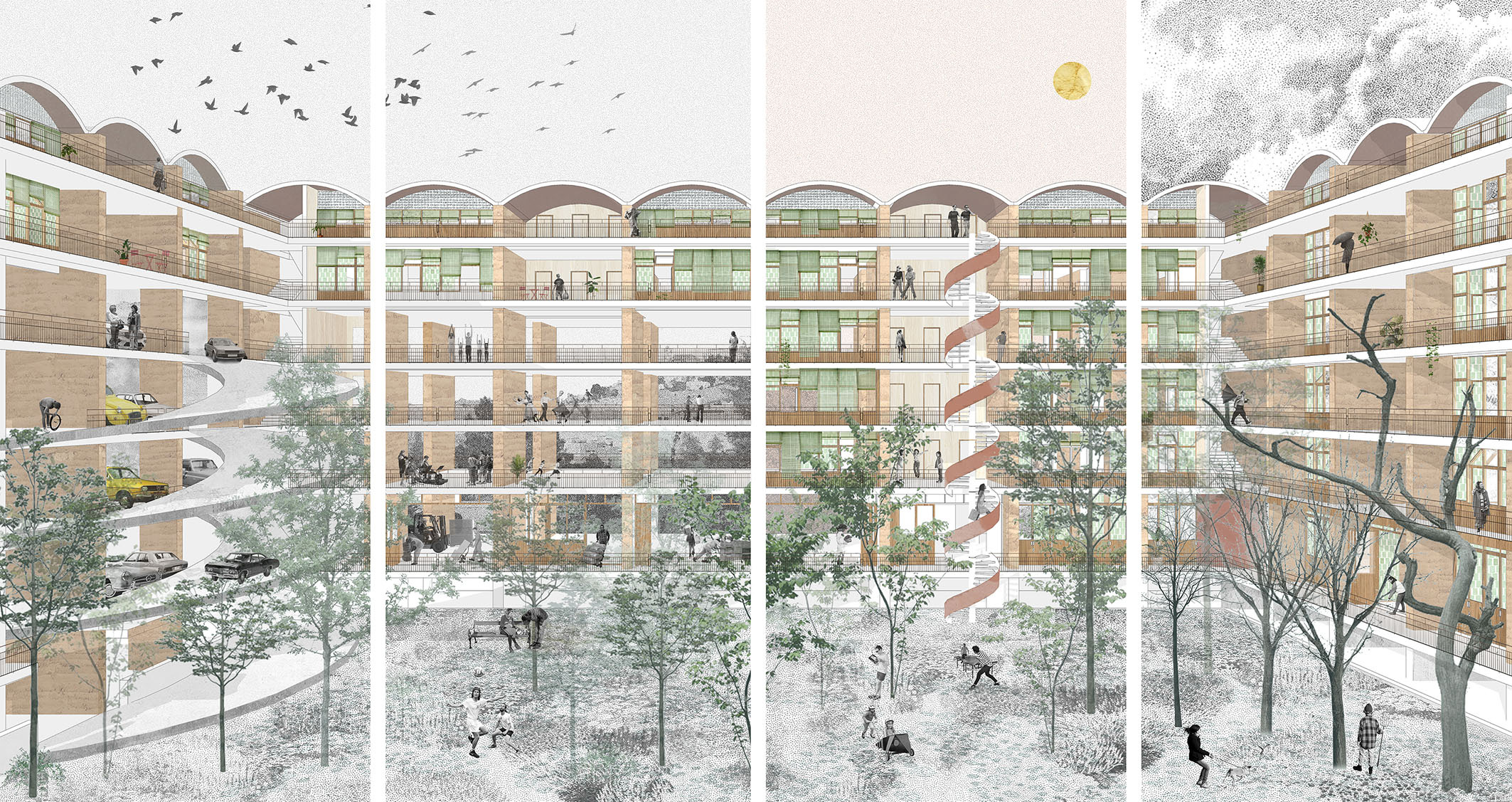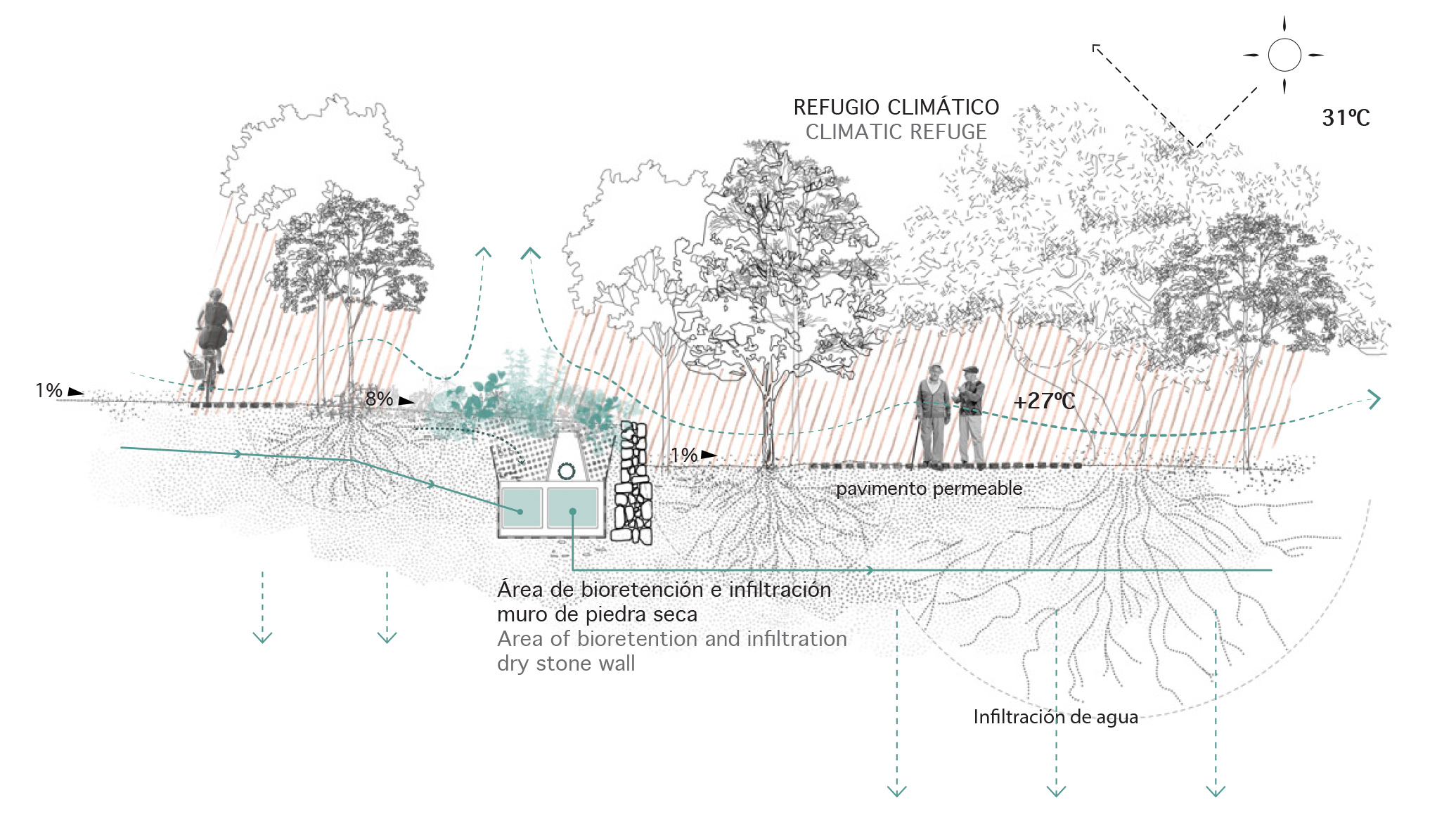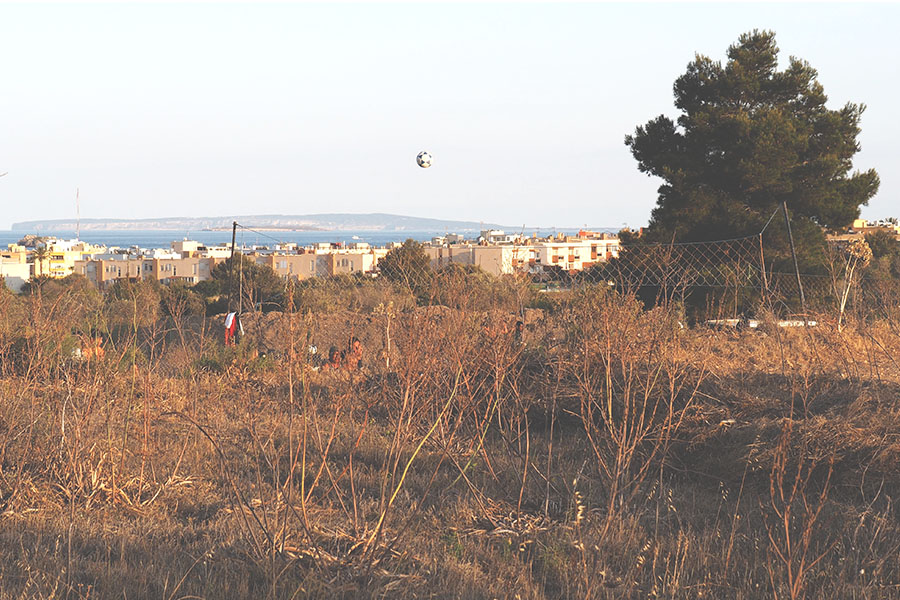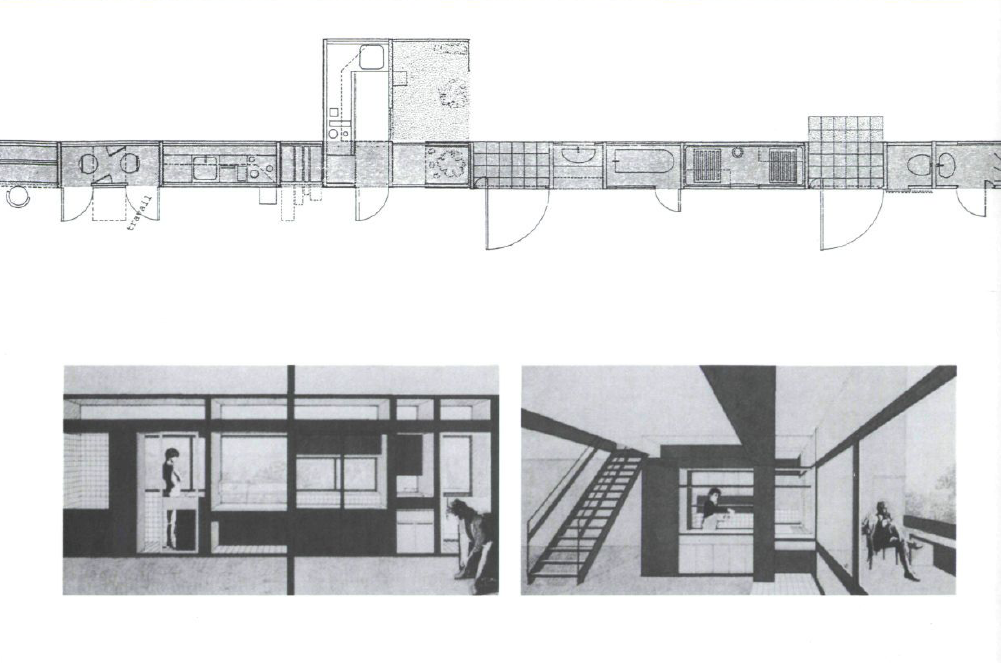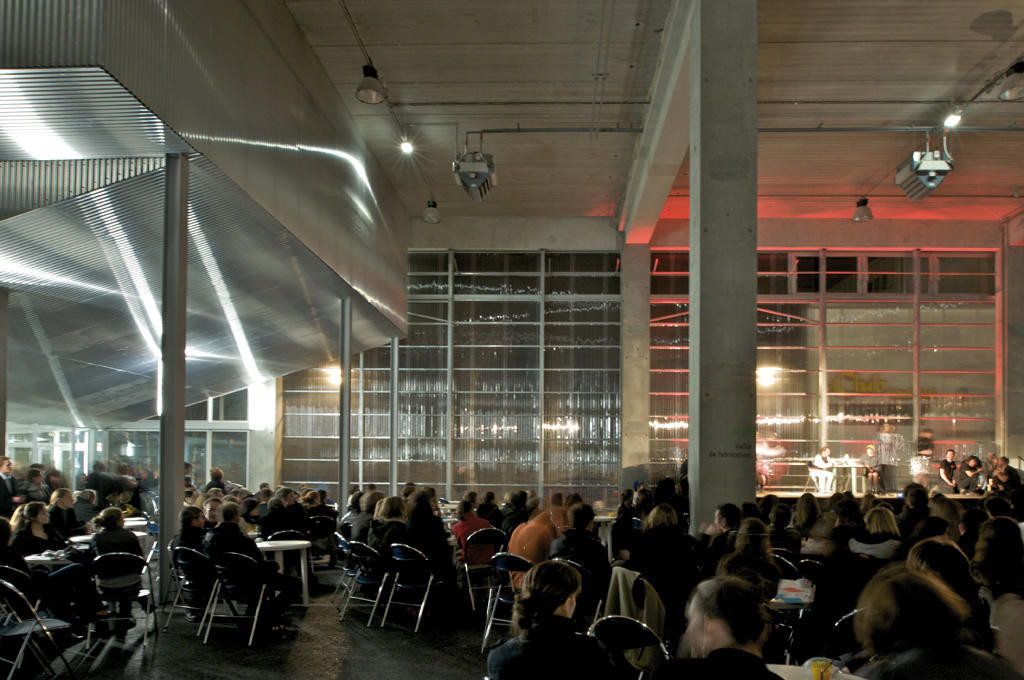AIRE, PAN Y AGUA
Eivissa (ES) - Mention Spéciale

TEAM PORTRAIT
VIDEO (by the team)
INTERVIEW
Click on the images to enlarge
1. How do you define the main issue of your project in relation with the theme “Living Cities Imagining architecture taking care of the milieus”? And in which way do you think your project can contribute to an ecological and/or social evolution?
The main target was to understand the impact of time on the Ibiza’s Island : The long times that have fabricated the history of the city and the short times that transform the city during the year to offer proposals that prevent the collapse of its resources, take advantage of what exists to think about the future and learn from the past of the city and its landscapes.
“AIRE,PAN Y AGUA” is a proposal that give the ability at the territory to absorb the fluctuation of inhabitants and to reduce the impact of the fluctuation on the local resources.
2. How did the issues of your design and the questions raised by the site mutation meet?
To our mind, the response has to be given by crossing scales of territory and time: - Analysing the pressures that are created on the housing, on the impact of the cars, on the difficulties to create meeting place all year long and the water consumption and its impact on the ground. As a response, the project propose a constructed structure that can give a response to those fluctuations and to the needs of the Ibiza’s inhabitants. - Revealing historical elements of the place (existing dry stone walls, cisterns and wells), integrating them resiliently into the urban parc in order to permit it to be a urban element able to create climatic atmospheres like sponge zones, shadows areas, sponge zones, storages protected from the wind.
PROJECT:



We worked with many references, some of them are : - Yves Lion, Research about « Bande active » by pushing the wet area on the facade to avoid any mechanical ventilation and to rethink the intimity from the housing to the outside - Lacaton Vassal, School of architecture of Nantes that propose a structure abble to welcome a diversity of uses. - Carles Oliver, Living Poseidonia, Housing project. Also the housing program of IBAVI.
SITE:



An analysis and a site survey work must be done before the development of the project on the master plan. These elements have been marked in our proposal but this survey of heritage elements must be detailed, specified and preserved for the island of Ibiza Earth analysis work could also be done in order to assess technical capabilities with the aim of building with this material which is part of local resources and Ibiza’s heritage. The housing project was planned in two phases in order that, during the first phase there would be spaces for neighborhood appropriation. This is why it’s a work with the future inhabitants would be necessary to analyse and rethink the possible uses and management of that places.
REFERENCES:


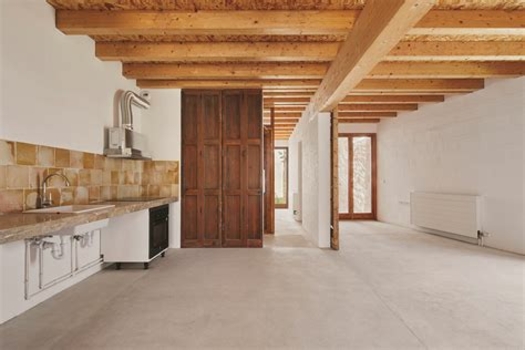
We are two architects with a point of view oriented on the patrimony and geological research.
6. How could this prize help you in your professional career?
It’s the second time that a project that we work on is awarded in Europan. It’s giving us confidence in our work. Now, we are hoping to have opportunities to confront our ideas to the specificities of the real.
TEAM IDENTITY
Legal status:
Team name:
Average age of the associates: 30 years old
Has your team, together or separately, already conceived or implemented some projects and/or won any competition? if so, which ones?
Yes, Europan 16 in Roquetas de Mar (second prize) and other young architects competitions in France and in Spain.

